

How to Save College. I wrote a thing last fall about massive open online courses (MOOCs, in the parlance), and the challenge that free or cheap online classes pose to business as usual in higher ed.
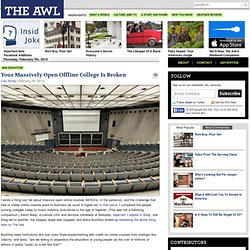
In that piece, I compared the people running colleges today to music industry executives in the age of Napster. (This was not a flattering comparison.) Aaron Bady, a cultural critic and doctoral candidate at Berkeley, objected. I replied to Bady, one thing led to another, the slippery slope was slupped, and Maria Bustillos ended up refereeing the whole thing here on The Awl. Bustillos sees institutions like San Jose State experimenting with credit for online courses from startups like Udacity, and asks: "are we willing to jeopardize the education of young people (at the cost of millions or billions in public funds) on a bet like that?”
To which my reply is: "Depends. That sentiment is the first sentence of Kio Stark’s forthcoming book, Don’t Go Back to School. Forget private school. About 900. Awakening Our Schools! Whole Brain Teaching. Pseudoteaching. Time-shifting instruction: flipped classroom and teaching. The Flip – a complete picture. This position piece was a response to a Learning & Leading prompt, submitted April 9, 2012: While many teachers have been introduced to “the flip” via the video lessons of pioneers, video is just one example of an evolving flipped teaching sensibility.
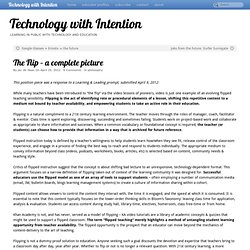
Flipping is the act of identifying rote or procedural elements of a lesson, shifting this repetitive content to a medium not bound by teacher availability, and empowering students to take an active role in their education. Flipping is a natural compliment to a 21st century learning environment. The teacher moves through the roles of manager, coach, facilitator & mentor. Class time is spent exploring, discovering, succeeding and sometimes failing. Flipped instruction today is defined by a teacher’s willingness to help students learn how/when they see fit, release control of the classroom experience, and engage in a process of finding the best way to reach and respond to students individually.
Strategic Learning Initiatives - Creating Communities of Learners. The Achievement Gap Initiative. Schools are doing Education 1.0; talking about doing Education 2.0; when they should be planning Education 3.0. Schools are doing Education 1.0; talking about doing Education 2.0; when they should be planning and implementing Education 3.0.
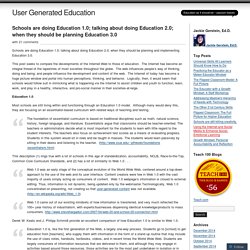
This post seeks to compare the developments of the Internet-Web to those of education. The Internet has become an integral thread of the tapestries of most societies throughout the globe. The web influences people’s way of thinking, doing and being; and people influence the development and content of the web. The Internet of today has become a huge picture window and portal into human perceptions, thinking, and behavior.
Logically, then, it would seem that schools would follow suit in mimicking what is happening via the Internet to assist children and youth to function, learn, work, and play in a healthy, interactive, and pro-social manner in their societies-at-large. Education 1.0 Most schools are still living within and functioning through an Education 1.0 model. How to avoid committing social media gaffes. 11 strategies for keeping your staff out of hot water in today's new media world By Nora Carr, APR, Fellow PRSA Read more by October 5th, 2010 • Keep your personal business private.
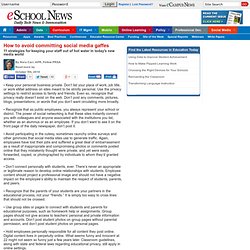
Don’t list your place of work, job title, or work eMail address on sites meant to be strictly personal. Use the privacy settings to restrict access to family and friends. Even so, recognize that privacy really doesn’t exist on the web. 30 Habits Of Highly Effective Teachers. Editor’s Note: We often look at the qualities and characteristics of good teaching and learning, including the recent following pieces: How A Good Teacher Becomes Great What You Owe Your Students.
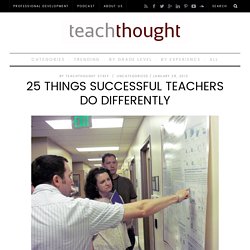
Project Based Learning - An Explanation and Model Rubrics. 7 Essential Principles of Innovative Learning. Big Ideas Culture Teaching Strategies Flirck:WoodleyWonderworks Every educator wants to create an environment that will foster students’ love of learning.
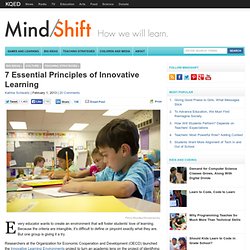
A Simple Guide To 4 Complex Learning Theories. How to Create Khan Academy Style Video Lessons? The Khan Academy of Salman Khan is helping students understand concepts better.
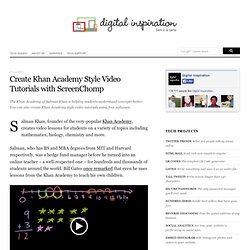
You can also create Khan Academy style video tutorials using free software. Salman Khan, founder of the very-popular Khan Academy, creates video lessons for students on a variety of topics including mathematics, biology, chemistry and more. Salman, who has BS and MBA degrees from MIT and Harvard respectively, was a hedge fund manager before he turned into an online teacher – a well-respected one – for hundreds and thousands of students around the world.
Bill Gates once remarked that even he uses lessons from the Khan Academy to teach his own children. In the past few years alone, Khan has single-handedly recorded over 2,400 video tutorials and his YouTube channel, available at youtube.com/khanacademy – has logged over 67 million views so far. How you can create Khan Academy style lectures? Finally, here’s a quick Khan Academy style video that I recorded using ScreenChomp. Flat Classroom™ Projects - Home.